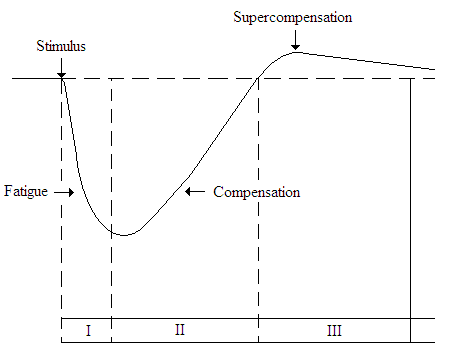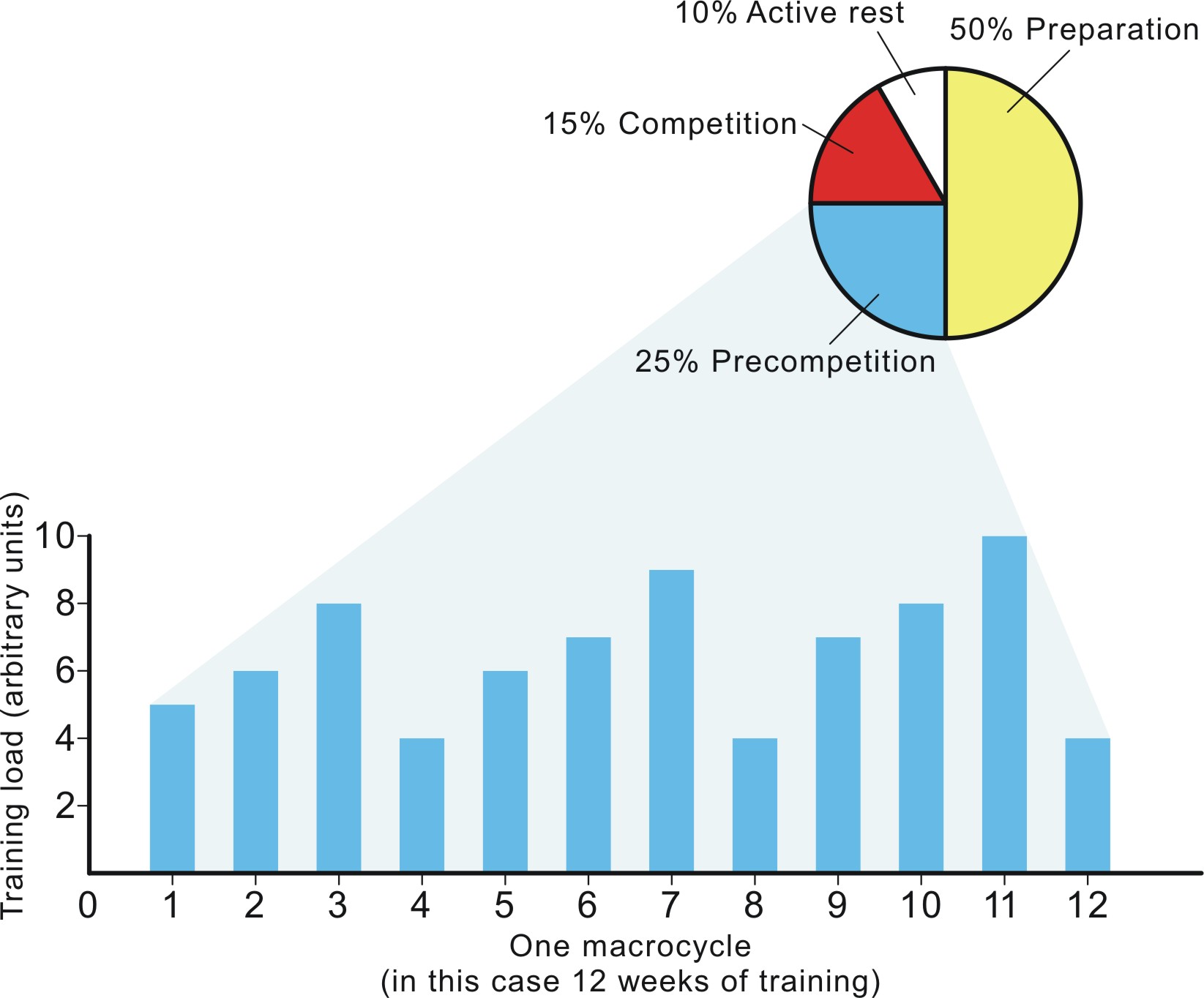
Sports training
Sports training affects the athlete's performance. From the physiological point of view we understand the training to be a process of adaptation to workload – adaptation of the athlete's organism to the increased body workload. It is both a structural and functional adaptation of the organ systems. Thanks to these adaptations movement abilities are developed.
Supercompensation
Supercompensation refers to the raised level of the energetic potential and the subsequent raised functional ability of the organism, both resulting from the previous workload – Fig. 23.
Figure 23 Supercompensation

Principles of the optimal training workload
Effective sports training must adhere to basic principles. Here we refer to the interconnectedness of elementary features of workload such as volume, intensity and recovery duration (Fig. 24).
Training volume – duration and frequency of training
Training intensity- effort made in a particular movement activity (intensity of workload on the muscles and transport system).
Recovery duration – time between training units
Highly intensive training with a smaller volume workload develops muscle speed and strength while lower intensity training of great volume workload develops aerobic capacity, i.e. endurance.
Figure 24 Optimal training model

Training cycle
Macrocycle = a yearly training cycle: preparation period, pre-competition period, competition, transition period – see Fig. 25.
Mesocycle = 1 month (4 weeks)
Microcycle = 1 week (7 days)
Figure 25 Contribution of individual training periods during the macrocycle

Adaptation of an organism to anaerobic (strength-speed) training
Adaptation of an organism to strength training:
During strength training the organism increases its anaerobic capacity, the myokinase activity is growing and there also occurs hypertrophy of fast muscle fibres.
Adaptation of an organism to speed training
Following the speed training there is an increase in the content and utilization of ATP and CP. Similarly to the after strength training situation there is hypertrophy of fast muscle fibres. Speed-endurance training raises the activity of the glycolytic system resulting in increased glycogen utilization.
Adaptation of an organism to anaerobic, i.e. endurance training
Training designed to develop endurance increases the amount of mitochondria in muscle and contributes to blood perfusion in muscle (muscle capillarization). It also enhances the anaerobic capacity, muscle glycogen values, lipase activity and the activity of the enzymes of the respiratory chain. There also occurs hypertrophy of slow muscle fibres which is not so significant as in fast muscle fibres.